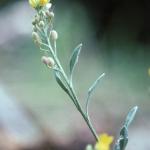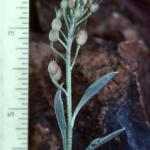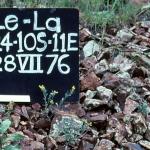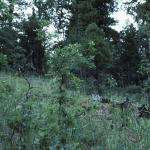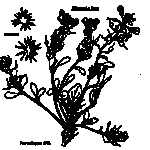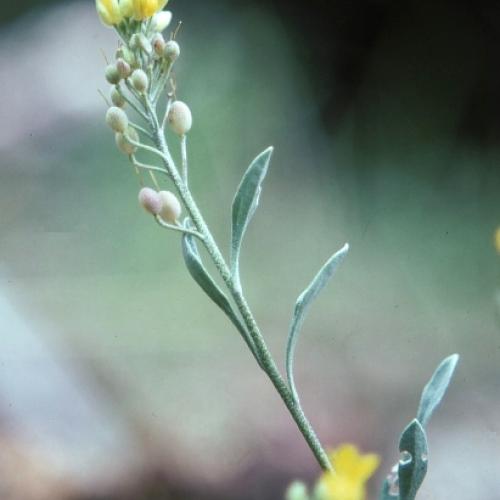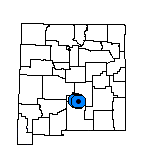Physaria lata (Lincoln County Bladderpod)
LESQUERELLA LATA WOOTON & STANDLEY
Perennial, densely pubescent and rough-granular to the touch; trichomes on short stalks, rays several, distinct, usually bifurcate; stems spreading or erect, simple, about 10 cm long; basal leaves entire, 3-4 cm long, blades elliptical to obovate, narrowed to a long slender petiole; cauline leaves elliptic to obovate, shortly petiolate, 1-2 cm long; inflorescences dense; petals yellow, 7-8 mm long; fruiting pedicels sigmoid, 5-8 mm long; silicles 3-4 mm long, erect, substipitate, globose to ellipsoid or obovoid, valves sparsely pubescent on exterior, glabrous or with a few hairs on interior; styles 3-5 mm long; ovules 5-6 per locule; seeds flattened, neither margined nor winged. Flowers April to July.
This plant grows within populations of Physaria pinetorum and is distinguishable from that species only by its sparsely pubescent silicles. Physaria valida also occurs in the Sacramento Mountains, but its silicles are densely pubescent, tear-shaped, and slightly compressed parallel to the septum. Other Physaria species in this mountain range have glabrous silicles.
New Mexico, Lincoln County, Sacramento Mountains.
Rocky places and disturbed soils in piñon-juniper-oak woodland and montane coniferous forest; 2,150-2,900 m (7,000-9,600 ft).
Physaria lata has been found as an occasional pubescent-fruited form in large aggregations of P. pinetorum. There is strong suspicion that it is only a sporadic variant of the latter species. Along with P. aurea, it is one of two endemic bladderpod species in the Sacramento Mountains.
Dropped in 2021. Considered a variant of P. pinetorum. Not recognized in the 2020 Flora Neomexicana.
Current land uses apparently pose no threat to this plant. A greenhouse study is needed to determine if the pubescent silicle characteristic is consistently represented in offspring of this questionable species.
Allred, K.W., E.M. Jercinovic, R.D. Ivey. 2020. Flora Neomexicana III: An illustrated identification manual. Part 2: Dicotyledonous plants.
Rollins, R.C. 1993. The Cruciferae of continental North America. Stanford University Press, Stanford, California.
Rollins, R.C. and E.A. Shaw. 1973. The genus Lesquerella (Cruciferae) in North America. Harvard University Press, Cambridge, Massachusetts.
Wooton, E.O. and P.C. Standley. 1913. Descriptions of new plants preliminary to a report upon the flora of New Mexico. Contributions from the U.S. National Herbarium 16:109-196.
Al-Shehbaz, I.A. and S.L. O'Kane, Jr. 2002. Lesquerella is united with Physaria (Brassicaceae). Novon: A Journal for Botanical Nomenclature from the Missouri Botanical Garden 12:319-329.
For distribution maps and more information, visit Natural Heritage New Mexico

